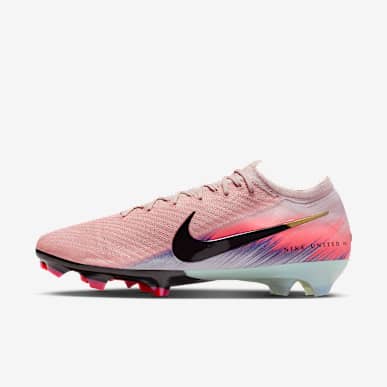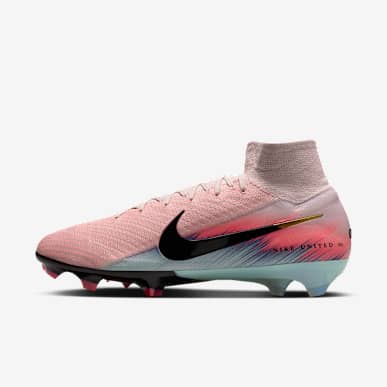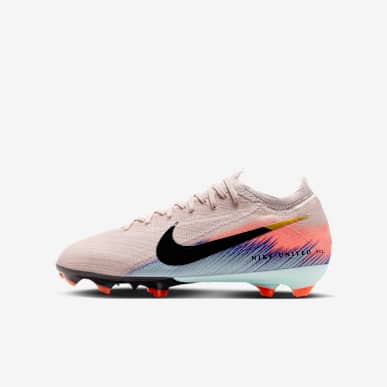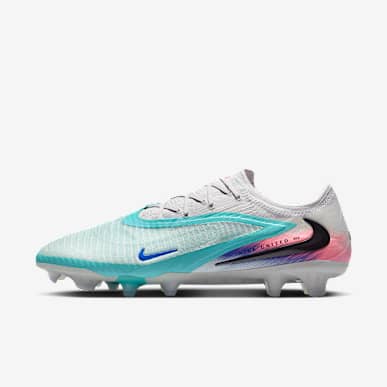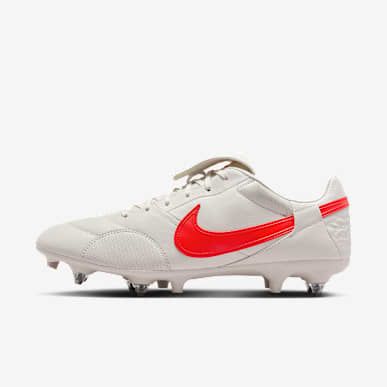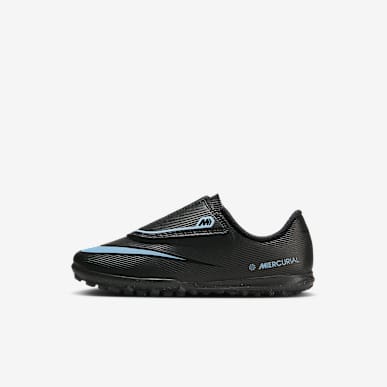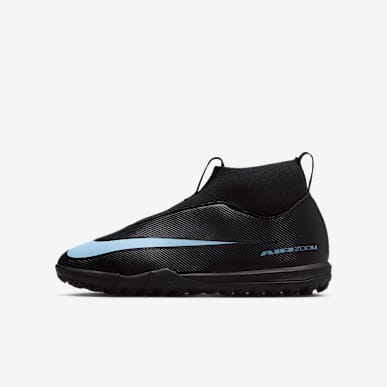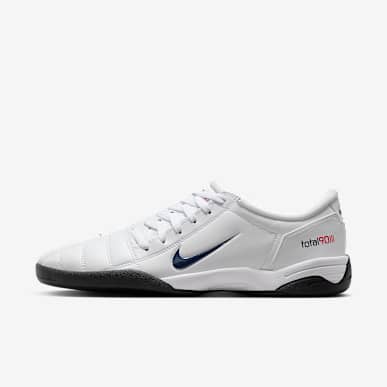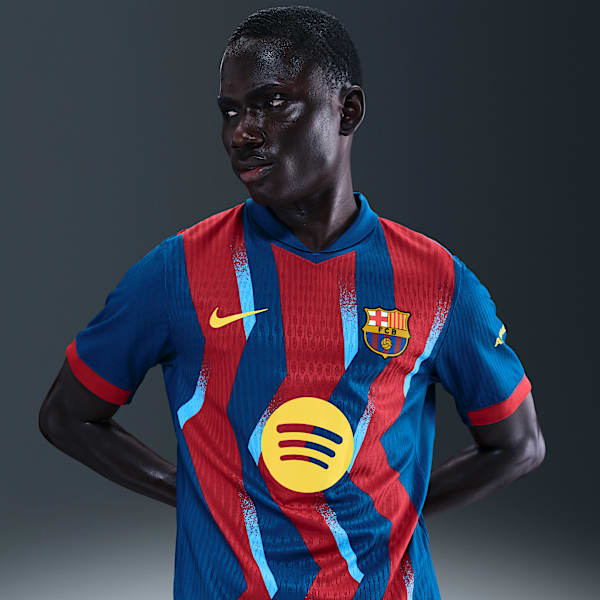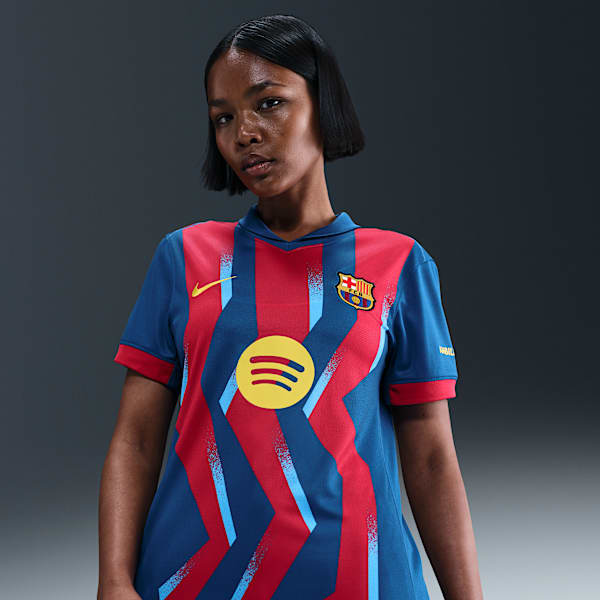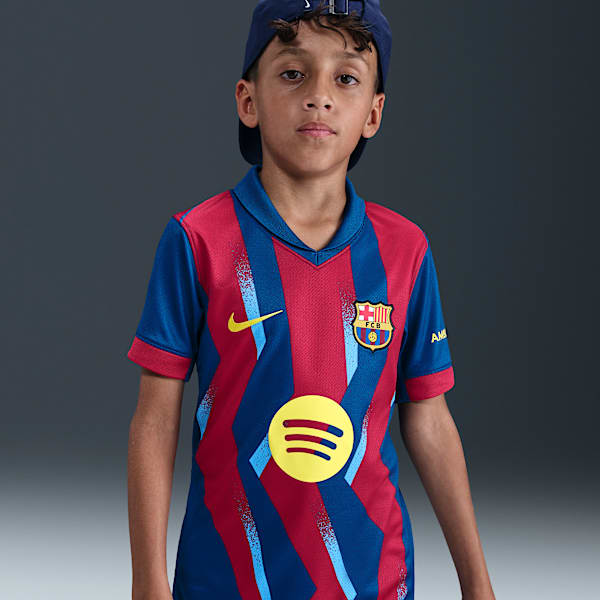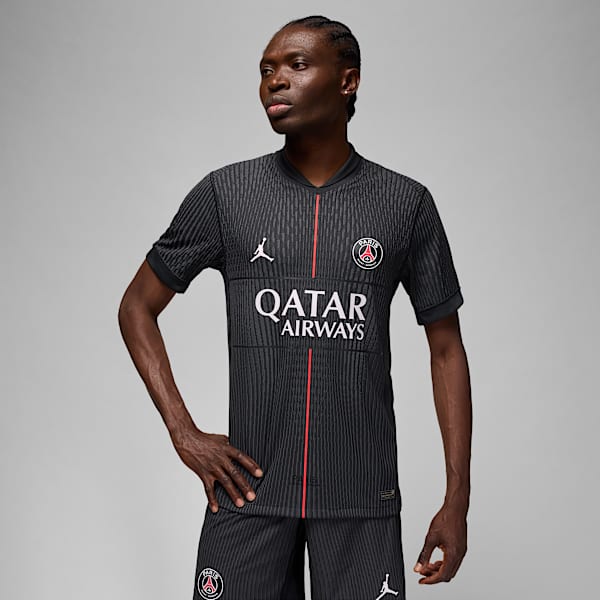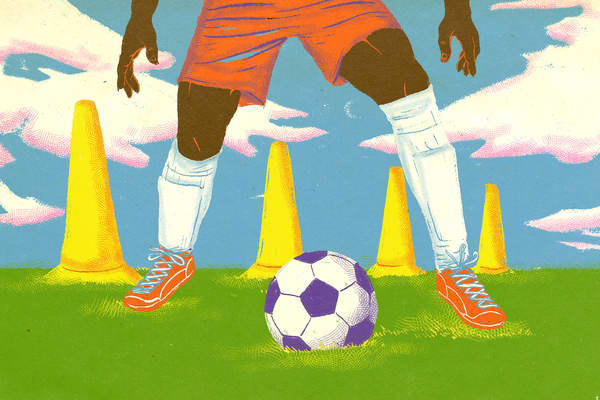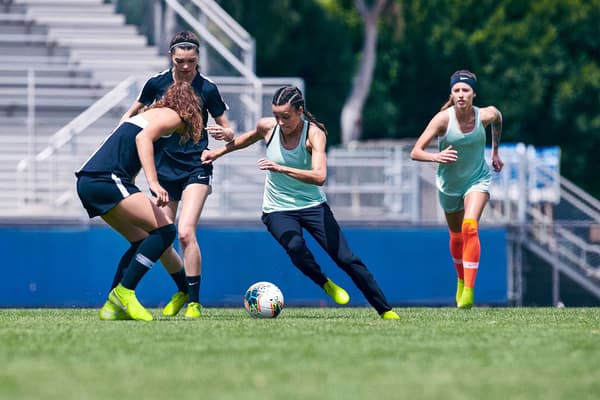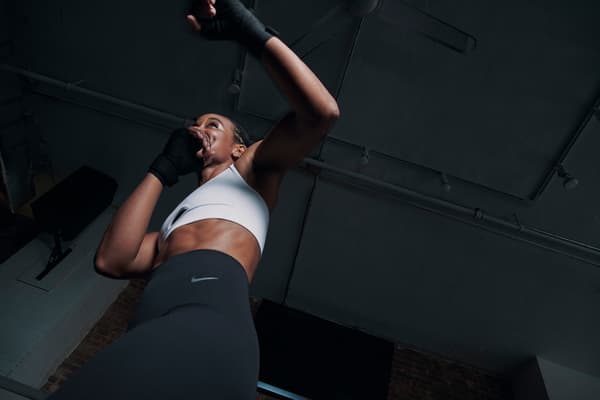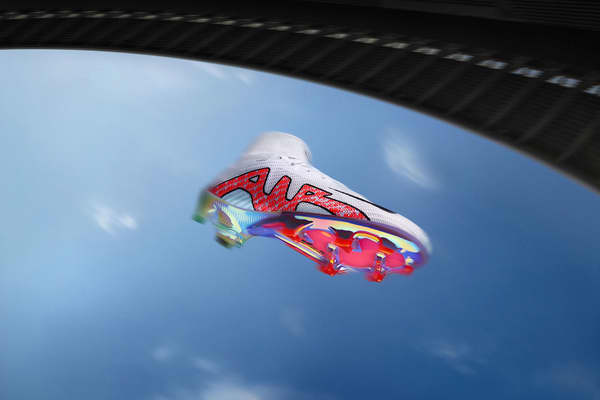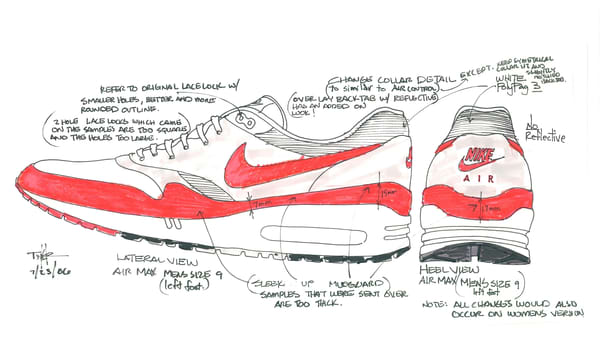Every Position in Football, Explained
Sport & Activity
Whether you're just beginning to learn about the game or hoping to become a player, this guide to football positions has you covered.
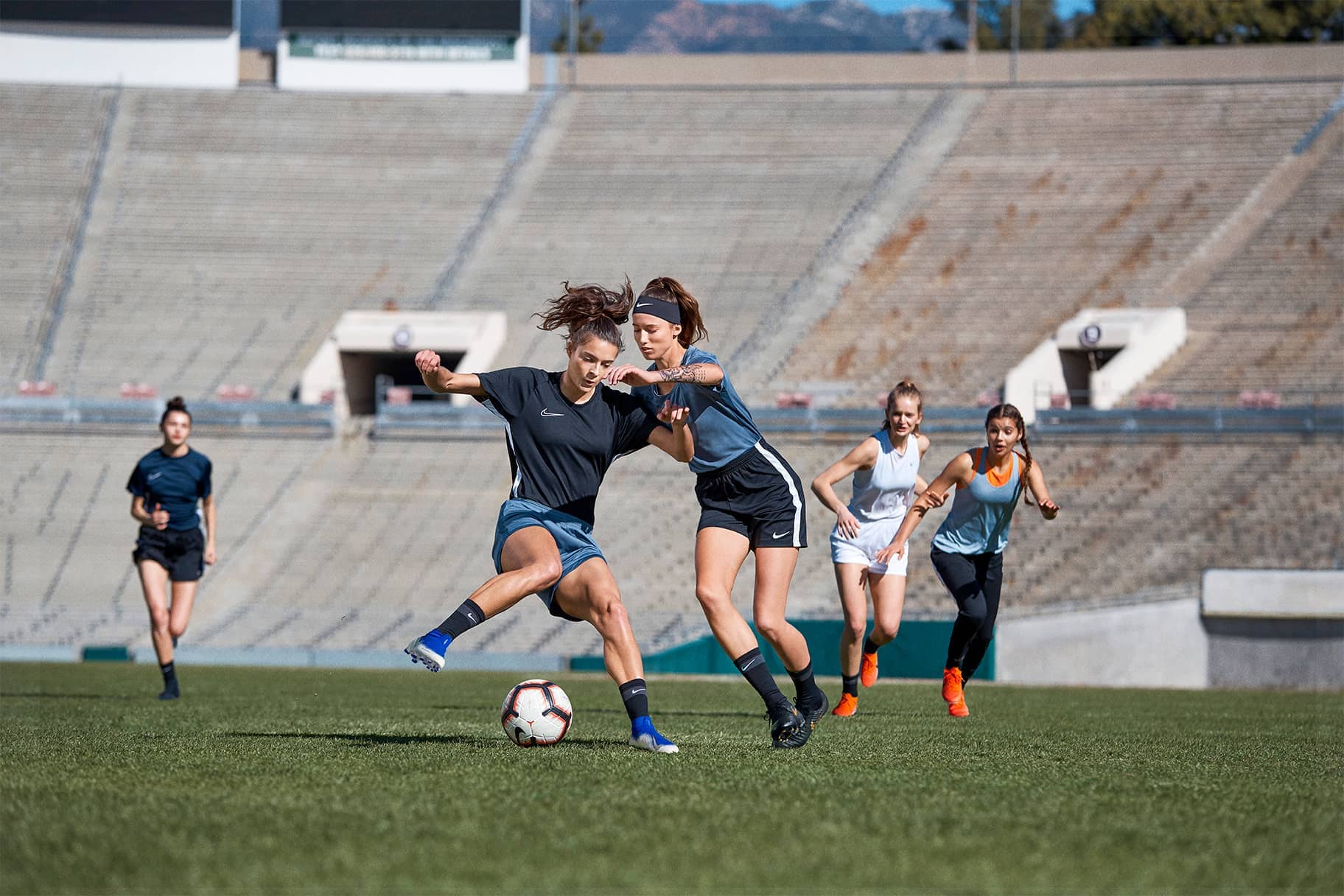
Tune into the post-match interviews of any professional football game, and you'll typically hear players praising their teammates. That's because no matter how skilled a single player may be, each position on the football pitch has a pivotal role in the game.
"It's essential that every player fully understands the role and responsibilities of the position that they are playing", explained Carl Wild, a UK-based football coach. "This will then ensure that the team plays effectively together, rather than as a group of individual players".
According to the International Football Association Board (IFAB) Laws of the Game, the main rule handbook used to officiate a football game, a match is played between two teams that lasts 90 minutes, barring overtime. For an official match to begin, most university, professional and recreational leagues require that the squads have at least seven players on the pitch at any given time, although the ideal number of players on the pitch per team is 11 (including the goalkeeper).
With that, many teams have rosters with up to 23 players in total to offer ample substitution opportunities. Most professional teams are allowed five player substitutions throughout the match, although substitutions can be unlimited for many recreational and youth leagues.
Because football is such a versatile sport, it's understandable that some positions have different names—and in some cases, purposes. For example, a "wide striker" may be called a "wing", or a "centre fullback" can also be considered a "stopper" or "sweeper".
To learn more about all the different positions in football, read on below.
(Related: The 10 Best Nike Gifts for Footballers)
What It Means to Be Out of Possession Versus In Possession
As Wild pointed out, the role of a position will vary, depending on whether the team is playing offence or defence. A particular position on the pitch may play a different role when their team is out of possession—or when the other team has the ball—versus when they are in possession—or when their team has the ball. Below, find out how each position operates in each of these scenarios.
What Are the Defensive Positions in Football?
1.Goalkeeper
"The main role of the goalkeeper is, of course, to keep the ball out of the goal", explained Wild. According to the IFAB Laws of the Game, the goalkeeper is the only position on the pitch allowed to touch the ball with their hands while the ball is in play.
- Out of Possession: Naturally, a goalkeeper's objective is to defend the goal in whatever way that they can. As Wild noted, this often coincides with communication with their teammates. "The goalkeeper needs to 'command' the area", he explained. "If there's an opportunity to do so, the goalkeeper should look to collect the ball from the attacking team and clear it". This is done, he noted, by catching the ball or kicking, punching or hitting it away.
- In Possession: The goalkeeper is allowed free movement throughout the pitch (if they choose), which changes their role when their team is in possession of the ball. "The goalkeeper has evolved into becoming an integral part of how many teams now play when they have the ball", Wild said. "They need to be confident and comfortable in possession of the ball". Wild explained that goalkeepers will often help to "set up" a play among teammates through short and long passes, as they tend to have the most complete vision of the match ahead of them.
- Out of Possession: Naturally, a goalkeeper's objective is to defend the goal in whatever way that they can. As Wild noted, this often coincides with communication with their teammates. "The goalkeeper needs to 'command' the area", he explained. "If there's an opportunity to do so, the goalkeeper should look to collect the ball from the attacking team and clear it". This is done, he noted, by catching the ball or kicking, punching or hitting it away.
2.Fullback
Also known as: left- or right-side defender
Typically positioned on the left or right side of the pitch, fullbacks work closely with the rest of the defensive line to help protect the goal from attacks from the opposing team, as well as initiate and deliver plays to their offensive teammates.
- Out of Possession: When the fullback is defending their goal from an attack, Wild said "their main role is to work closely with the other defenders (namely those more centre-positioned defenders) to ensure that the opposition cannot penetrate through the defensive line". Wild noted that the opposition will typically try to move the ball through the spaces between the defenders, so managing this area is key to avoid getting scored on.
- In Possession: Wild noted that, when a fullback's team has the ball, their role will largely depend on their team's formation. For example, he noted, some teams will play their fullbacks as both defensive and offensive players, taking full range of the left or right sideline to both attack their opponent's goal and protect their own. In other instances, the fullbacks will centre themselves on the pitch to allow for offensive players to take up more width in the other team's half.
- Out of Possession: When the fullback is defending their goal from an attack, Wild said "their main role is to work closely with the other defenders (namely those more centre-positioned defenders) to ensure that the opposition cannot penetrate through the defensive line". Wild noted that the opposition will typically try to move the ball through the spaces between the defenders, so managing this area is key to avoid getting scored on.
3.Centre Back
Also known as: sweeper
"The primary role of the centre back is to protect the areas of the pitch that are directly in front of their goal and to organise the defensive unit", Wild said.
- Out of Possession: According to Wild, the centre back guards the most vulnerable place on the pitch: the area right in front of the goal. "It's the centre back's responsibility to remove the ball from this area as soon as possible", Wild said. "This usually involves engaging with the opposition's centre forward, who tends to be the biggest [scoring] threat".
- In Possession: When the centre back has the ball, they're often responsible for setting up the way in which the team will play the ball down the pitch. He added that the centre back often provides a "safe pass", or a pass from an offensive player who encounters pressure from the other team. The centre back, who is often unmarked (in other words, they don't typically have an opponent guarding them), provides a way to relieve this pressure and the opportunity to set up a new play.
- Out of Possession: According to Wild, the centre back guards the most vulnerable place on the pitch: the area right in front of the goal. "It's the centre back's responsibility to remove the ball from this area as soon as possible", Wild said. "This usually involves engaging with the opposition's centre forward, who tends to be the biggest [scoring] threat".
4.Defensive Midfielder
Also known as: stopper
Wild noted that many football teams operate with one or two defensive midfielders. "Their main role is to provide the defence with further protection by operating just in front of [the fullbacks and centre back]", he explained.
- Out of Possession: When protecting the goal from an oncoming attack, a defensive midfielder will continuously try to prevent the ball from moving into central areas. "They do this by blocking the passing lines between the other team's defensive and offensive midfielders".
- In Possession: "When [a defensive midfielder]'s team has possession, they must play a similar role to the centre back, in that they are the links between [defence and offence]", Wild said. That said, they need to be ready to receive passes from both types of player.
(Related: The Best Nike Football Boots to Match Your Playing Style)
- Out of Possession: When protecting the goal from an oncoming attack, a defensive midfielder will continuously try to prevent the ball from moving into central areas. "They do this by blocking the passing lines between the other team's defensive and offensive midfielders".
What Are the Offensive Positions in Football?
1.Attacking Midfielder
These players cover a wide swathe of the football pitch. And in doing so, they are in a prime position to dive into an offensive attack on their opponent's goal—and to protect their own defensive line.
- Out of Possession: Wild explained that this player will do most of their defensive work on their opponent's half of the pitch. If the attacking midfielder's team loses the ball, their objective is to quickly get it back.
- In Possession: "When their team has the ball, the attacking midfielder will often be the player who helps penetrate the opponent's defensive line through their movement, with or without the ball", said Wild. He added that these players may lose the ball more often than others, as they are expected to take more risks. "They should be able to create goal-scoring opportunities", Wild said. "With risk, you will sometimes get reward".
- Out of Possession: Wild explained that this player will do most of their defensive work on their opponent's half of the pitch. If the attacking midfielder's team loses the ball, their objective is to quickly get it back.
2.Wide Striker
Also known as: wing
These players, who are situated on the far right and left sides of the pitch in front of the fullbacks, work closely with their centre-orientated teammates, primarily to attack the goal.
- Out of Possession: Like the attacking midfielder, "the wide striker will do most of their defensive work in their opponent's half of the pitch". Wild said. "They will usually be the players, alongside the centre forward, that initiate an [attack] with the purpose of preventing their opponents from progressing and winning the ball close to the goal".
- In Possession: As Wild explained, these players have two major roles on the offence. Firstly, they're often in direct line to receive the ball from fullbacks and create subsequent plays into the middle of the pitch. They are also key in supporting the centre forward(s) to ensure they aren't isolated when receiving the ball (to help prevent them from losing it).
- Out of Possession: Like the attacking midfielder, "the wide striker will do most of their defensive work in their opponent's half of the pitch". Wild said. "They will usually be the players, alongside the centre forward, that initiate an [attack] with the purpose of preventing their opponents from progressing and winning the ball close to the goal".
3.Centre Forward
Also known as: striker
Strikers are the main scorers on the football pitch, said Wild. Their team is working throughout the game to get the ball to them in hopes of putting it in the back of the net.
- Out of Possession: When the opposing team has the ball in the half of the pitch that they are defending, a centre forward will usually be the first player to pressure their defence, attempting to force their player to not send the ball directly back down the pitch.
- In Possession: Apart from being the main scorer (and doing everything they can to get the ball in the back of the opposition's net), a centre forward is also critical in sending the ball back out to wide strikers or midfielders to craft the perfect play. Wild said these players are continuously searching to "exploit" the spaces left between the opponent's defence, either by dribbling the ball through it themselves or sending it to other teammates.
(Related: The Best Nike Football Shinguards to Try)
- Out of Possession: When the opposing team has the ball in the half of the pitch that they are defending, a centre forward will usually be the first player to pressure their defence, attempting to force their player to not send the ball directly back down the pitch.
Words by Julia Sullivan, ACE-certified CPT
